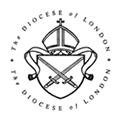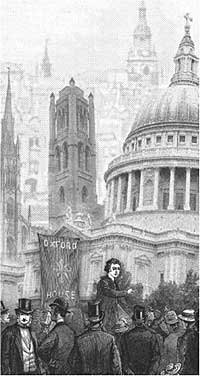How to Write a Church and Parish History: Outreach
Look
You might get a good sense of the past priorities of a congregation merely by looking around the church building. Are there, for example, material items such as memorials in the building that suggest involvement in outreach or mission organisations, either locally or further afield? You may also see architectural evidence suggesting the growth of the congregation over time (for example, was a gallery added to the building?) Such architectural responses to growth may suggest past successes in outreach.
Listen
It is possible that clergy and longer-standing members of the congregation will have insights into the past outreach activities of the church. Furthermore, the ‘institutional memory' of a church can be revealing – accounts and narratives from the past are often kept alive in congregations. Particularly significant may be whether the church had a past ‘party' identification, as both Evangelicals and Anglo-Catholics tended to prioritise outreach activities. However, be careful as you assess such reminiscences and accounts, particularly if they hark back to a ‘golden age' of activism and success: while they may be broadly accurate and useful, they may also be nostalgic! Follow this link for information on oral history.
Read
For excellent descriptions of the range of outreach activities undertaken by churches and the ways in which the priorities of congregations changed see Jeffrey Cox, The English Churches in a Secular Society, Lambeth, 1870-1930, Oxford: OUP, 1982; Simon Green, Religion in an Age of Decline: Organisation and Experience in Industrial Yorkshire, 1870-1920; and Stephen Yeo, Religion and Voluntary Organisations in Crisis, London: Croon Helm, 1976.
For insights into the approaches of nineteenth century Evangelicals to outreach in working-class communities (particularly lay participation) and the development of cooperation between Evangelicals and Nonconformists, see Donald Lewis, Lighten their Darkness: the Evangelical Mission to Working-Class London, 1828-1860, Carlisle: Paternoster, 2001. On Anglo-Catholic outreach in nineteenth century London, see chapter eight of John Shelton Reed, Glorious Battle: The Cultural Politics of Anglo-Catholicism, London: Church Union, 1998.
On the role of women parish charitable endeavours, see F. Prochaska, Women and Philanthropy in Nineteenth Century England, Oxford: OUP, 1980; S. Gill, Women and the Church of England from the Eighteenth Century to Present, London: SPCK, 1994.
Research
To find out about the outreach activities of a church in a given period it will be important to read through the visitation returns of individual clergy and the churchwarden's visitation returns(for a laypersons perspective). You may also find information in parish magazines, which may well be held at the London Metropolitan Archives or may be sitting on a dusty shelf in the vestry! You may find details about outreach in Autobiogaphies and Biographies, and also Personal Testimonies. Local newspapers, often held in local archives, may also add colour to the interaction between church and community.
move on to ... church planting






